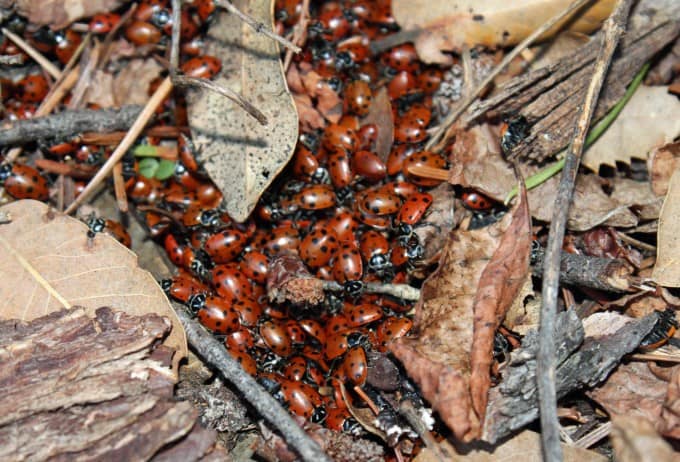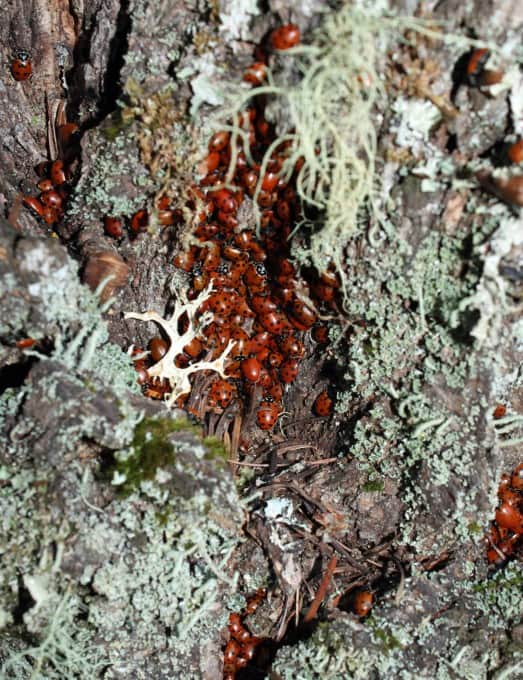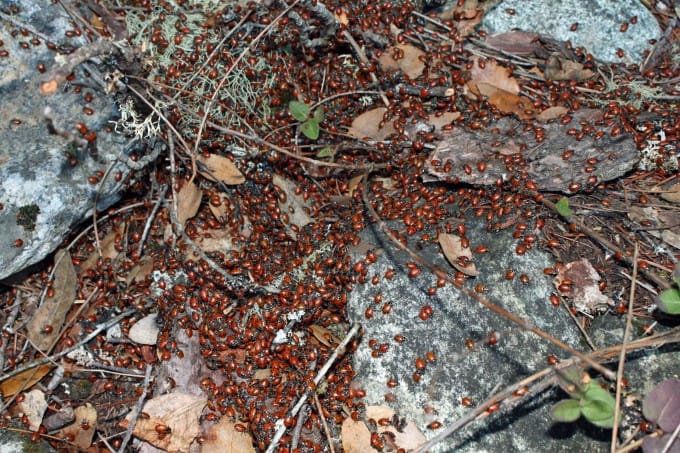
A few weeks ago in December, Mike and I ventured into the woods to fish the Butte Creek. After a few hours of fishing and hiking rough terrain we stumbled onto a Ladybug congregation area. There is an image above of the convergent ladybugs. After a few minutes of photographing the beetles, we noticed that they started to rise from the leaf-litter. Ladybugs or Ladybird beetles usually overwinter in leaf-litter, crevices in rocks, tall grass areas, cracks and crevices in trees and many other locations including nearby homes. The leaf-litter is most desirable for the beetles since it insulates and protects them from the elements.

In the fall these beetles search for places to hibernate for the winter. Once a beetle finds a suitable location it releases a pheromone to attract other beetles from up to a quarter mile away. This pheromone can remain on the surface of hibernation sites for several years to assist following generations in survivorship. The beetle’s lifespan is around 11 months. These voracious aphid predators can eat upwards of 20 per day making them a great natural bio-control for these pests. The insects are often used in small scale agriculture as Intergraded Pest Management (IPM) for aphids.

The Convergent Lady beetle has a unique life cycle in that it can alter its reproduction rate according to the availability of aphids. They produce 1-2 generations a year with each female ovipositing 1,000 or more eggs in a 3 month period. Mating occurs at the beginning of diapause or the start of the hibernation period. Diapause is a delay in growth due to environmental factors such as extreme cold weather or extreme heat. Diapause for this species can last up to 9 months if there are no food sources to consume. After hibernation or diapauses, the ladybugs will lay their eggs near plants where aphids will be abundant. In the summer months you can see these lady beetles on crops such as vegetables, alfalfa, sorghum, wheat and other crops attacked by aphids.